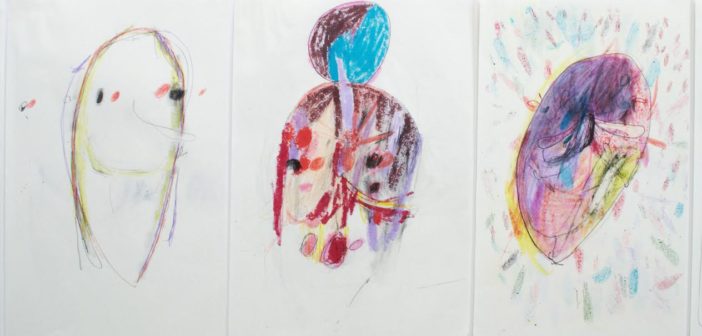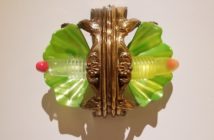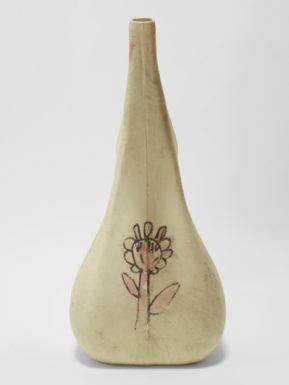
Courtesy the artist
Every Saturday morning I water plants and draw cartoons. Before that I drink coffee and eat a quick breakfast, usually toast.
My watering can was produced by Union Products, Inc. in Leominster, which was a major plastic manufacturing city in central Massachusetts. Don Featherstone’s pink flamingos were made there. If you’ve never seen a pink lawn flamingo, go to your nearest suburb now. They’re currently produced by Cado Company, located in Fitchburg, Massachusetts. For two years, I’ve driven past the building nearly everyday. Their specialities are molded plastic novelty items including piggy banks, ghosts and jack-o-lanterns, giant ice cream cones, and the electric Santa. I never thought that the building heading towards the highway would have item number 56461 inside, a plastic gravestone that could actually be personalized, lit up and displayed on the front lawn.
The front contour of the watering can is perfectly symmetrical and elegant. There’s a slight bulge from the receding handle that makes this view curious. The top of the spout is slim and gradually widens to the belly. Through the casting process, there are thousands of directional stress grooves now filled with everyday grit. It’s bone white and beautiful.
Someone young, now older, drew a smiling flower under the spout. It was drawn on with black marker and painted in with pink nail polish. I can’t say that this was in fact the method, but based on the dullness of the black outline and the sheen of the pink, this is what I expect these materials to look like after thirty-plus years. This object encapsulated what I was doing on Saturday mornings—watering and drawing.
The cartoons I drew on napkins and envelopes were usually disposed of with the leftover crust from the toast. However, once I began to draw more often than once a week, I noticed a reappearing image. My weekend practice ultimately turned into a nightly one and instead of drawing frogs with eyeglasses, balding middle-aged men, or other frivolous things, I began to draw only what I can describe as masks. The masks are approximately fist-size on paper approximately face-size.
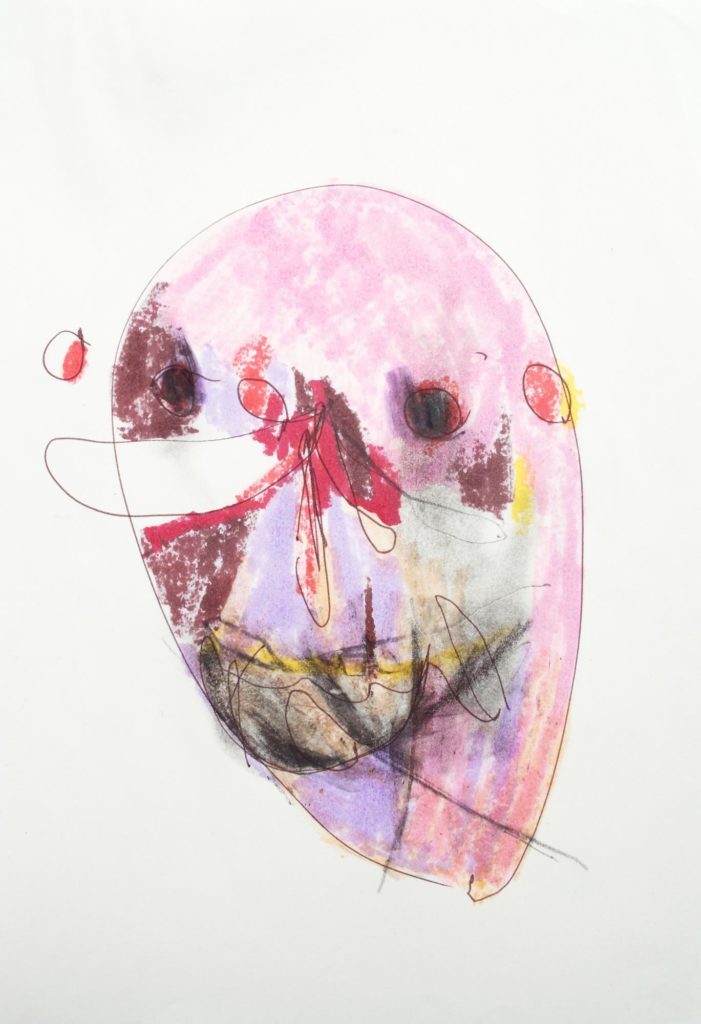
Ross Normandin, Untitled, 2017, marker, graphite, crayon, ink on paper, 10 x 7 inches, Courtesy the artist and GRIN
Each page holds an image different from the last. This marks a shift from my other work, since I frequently use casting to achieve repetitive forms. Although the uniqueness of each drawing is apparent compared to the rubber Pig paintings or Short Holiday, the process of casting creates character by way of the subtleties. My watering can is one of thousands and each of their contours are practically identical; however, imperfections are evident where the two parts of the mold meet. The extra material that spews out at the center seam or around the initial punch for the hole for the hose are points where differences exist. By using mold making and casting in my work I am able to produce near identical objects that are only enhanced by spews and air bubbles.
The attempt for consistency in the drawings starts with the nose. Nose first and all eyes follow. I can hardly navigate the rest of the drawing after that. Much of the color in the drawings comes from marker that is applied to the backside of the page. The thin paper allows only a certain amount through. Warms bleed through strongly while lavender needs muscle.
Sweet, sour, ugly, funny; these masks change. Although not as apparent, these attributes are embedded in Short Holiday as well. Item number 55481, the 9” Carry Jack made by Cado Company, was produced in a similar way to Short Holiday. If I try hard enough I’ll see the sinister and the sincerity in the pumpkin’s face, too.
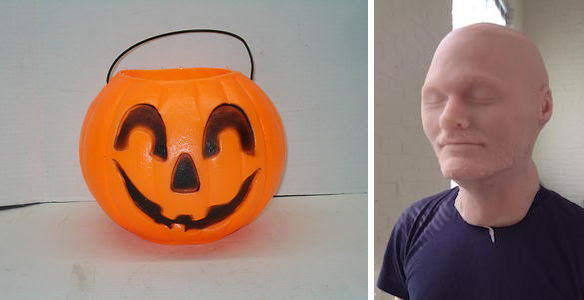
Left: Jack-o-lantern produced by Cado Company, Leominster, Massachusetts. Right: Artist in mask. Both images courtesy the artist

